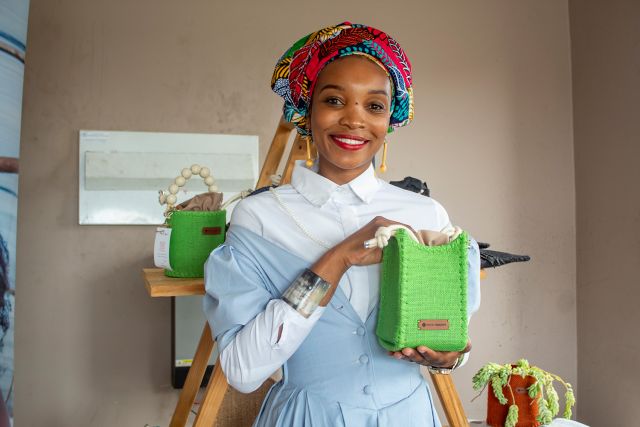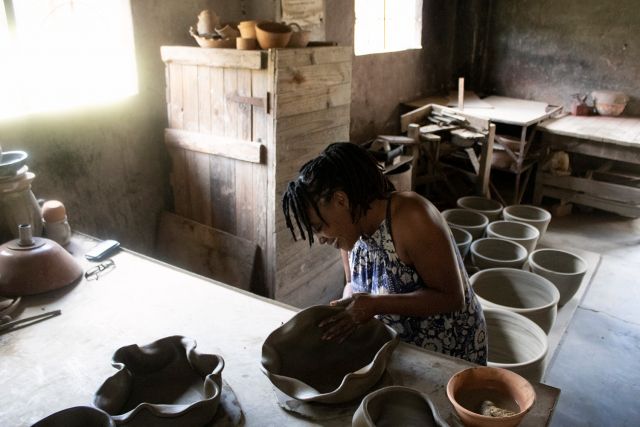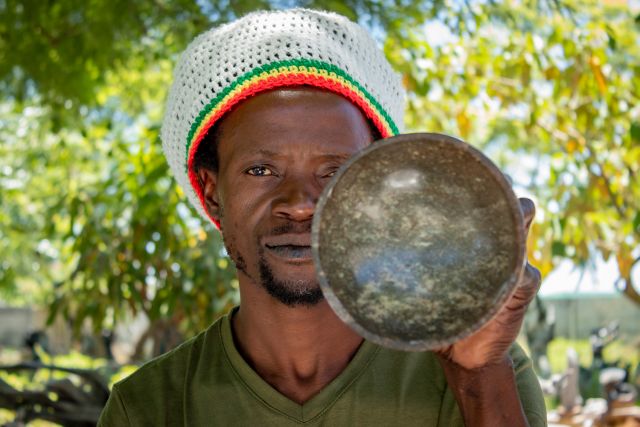This bracelet is created using the techniques of hand pulling, soldering and micro mosaic. The open cuff style is formed from hand-pulled three-strand copper wire. It features circular, mosaic-patterned ends created with blue colour toned seed beads set in black jewellery grout. The piece is given a high-sheen finish from the jeweller’s polishing wheel.
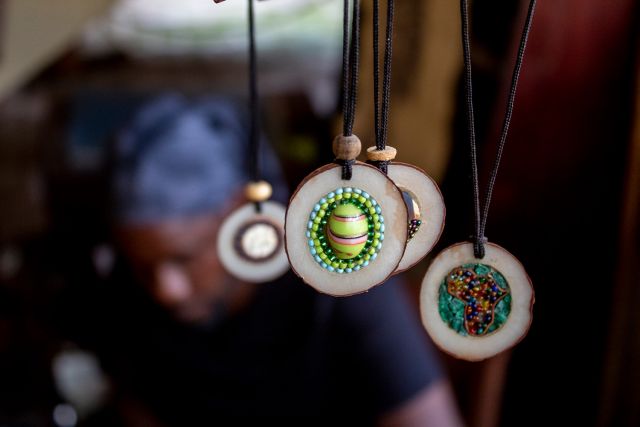
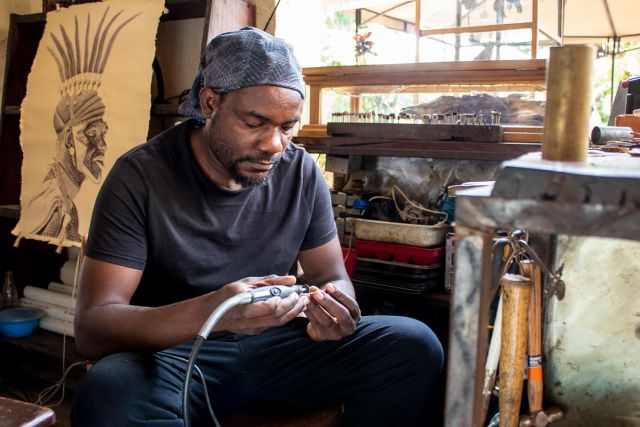
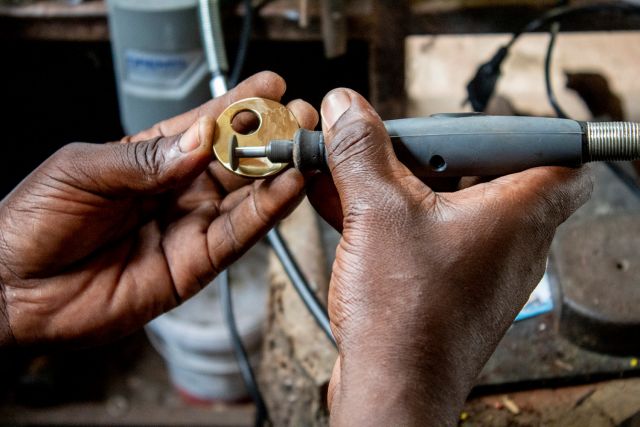
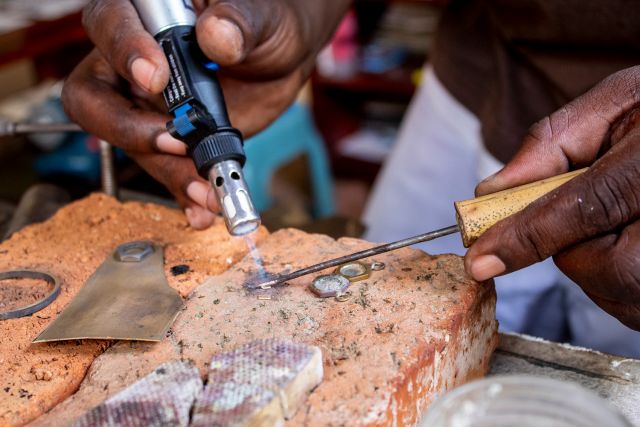
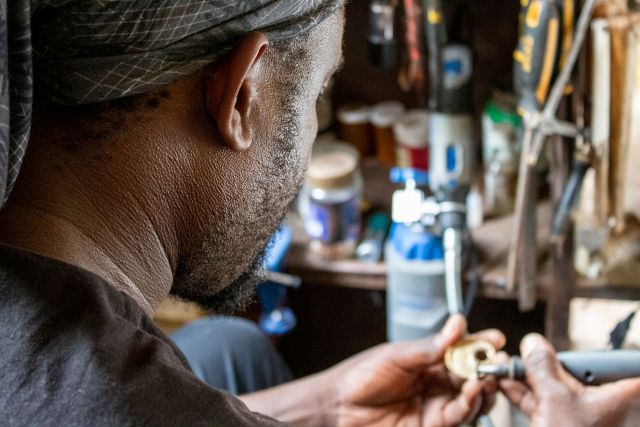
Obert Monga
- Sipho Micro Mosaic and Jewelry
- Mosaic maker
- Victoria Falls, Zimbabwe
- Master Artisan
Elephants Walk Artists and Shopping Village, Adam Stander Drive 273, Victoria Falls, Zimbabwe
By appointment only
From discarded to dazzling, an upcycling challenge
- • Obert works with reclaimed plumbing and refrigerator parts
- • He is inspired by the natural world and his Tonga culture
- • Social impact and raising conservation awareness is a key feature of his work
Obert Monga creates objects that have a positive impact on the world. He specialises in micro mosaic jewellery. To achieve this, Obert combines his self-taught technique with the silversmithing skills from his three-year apprenticeship at Ndau Collection in Victoria Falls, where he opened his workshop in 2010. Working in a remote town, traditional supplies are hard to come by, so Obert recycles unwanted hardware metals, repurposes harmful snare wire, and sources materials like gemstones, shells, and ostrich egg shells from the natural world. Through his craft he is contributing to local conservation efforts. “This work is important to me because whenever I find or collect scraps of material, I can bring them to life again. And in so doing, I am helping to clean our environment. The little that I do makes a big difference.”
Read the full interviewWorks
Photo: Wonai_Haruperi©Michelangelo_Foundation

Photo: Wonai_Haruperi©Michelangelo_Foundation
This open band cuff is created from recovered poacher’s snare wire. The wire is high-heat forged, hand beaten, pulled and shaped to form the cuff. It is then embellished with geometric brass and copper snare wire details soldered over the form’s top. The cuff is given contrasting finished thanks to oxidised sulphur and a high polish.

Photo: Wonai_Haruperi©Michelangelo_Foundation
This pendant is formed using a repurposed brass tubing base, inlaid with mosaic ostrich egg chips and small cowrie shells. The base is created by cutting fine slices of plumbing tubing, which is then soldered to a hand-cut, brass sheet back plate. The micro mosaic design is inspired by a Makishi mask face and is set with black jeweller’s grout, and given a high-sheen polish. Makishi is part of a traditional rite of passage ceremony for boys ushering them into manhood, and involves masked masqueraded dancers.

Photo: Wonai_Haruperi©Michelangelo_Foundation
This pendant is made from a thin slice of vegetable ivory, the tagua nut, a seed from the ilala palm. The outer brown shell of the seed is left on, and a naturally occurring central hole is reworked to form a wider circle. Using black jeweller’s grout, the circle is then set with micro mosaic glass, and beads and stone chips. This gives the pendant a freestyle patterned centre. The pendant is strung on cotton cord.

Photo: Wonai_Haruperi©Michelangelo_Foundation
This rectangular ring is handmade in sterling silver using metal sheet creation and rolling, cutting, soldering and polishing techniques. Its base is inlaid with a micro mosaic swimming turtle image set in black jeweller’s grout. The turtle shape is created by shaping and hammering copper wire, then in-filling the shape with ostrich egg shell chips and amazonite gemstone chips. The main field of the shape is in-set with turquoise chips.





